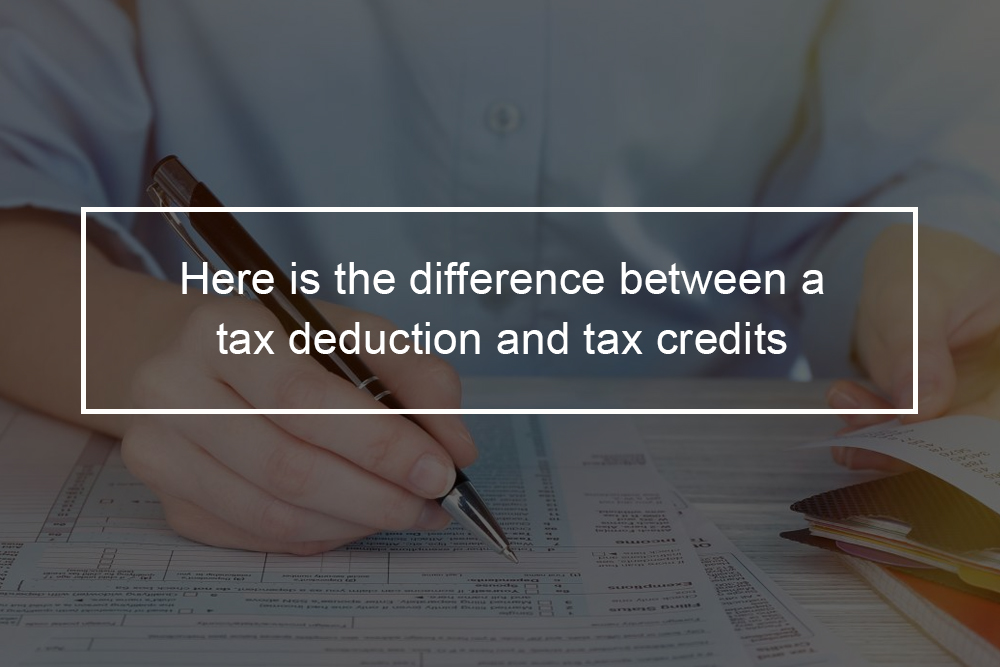
In some scenarios, you may qualify for a tax deduction, while you might qualify for a tax credit in others.
Both tax credits and deductions lower your tax bill, but they work in different ways. Deductions lower your taxable income, whereas credits lower your tax burden. For instance, if you are in the twenty-two tax bracket and you have $100 reduction, that deduction can save you $22 in taxes (22% of $100). Nonetheless, if you have $100 tax credit, it will save you $100 in taxes. That is what tax professionals mean when they say tax credits are a dollar-for-dollar reduction in your tax burden.
Here is a closer look at the differences between tax credits and tax deductions- and how they can assist you to have money on your taxes.
If you use tax preparation software such as Turbo Tax, they will calculate your tax liability appropriately based on the tax deductions and tax credits you are allowed to claim.
What is a tax deduction?
An income tax deduction reduces how much your income is subject to taxes. A tax deduction decreases your taxable income by the percentage of your highest federal income tax bracket. There are two types of deductions:
Itemized tax deductions
Itemized deductions are definite tax breaks you can use to reduce your taxable income. Here are regular itemized deductions.
- Charitable contributions
- Mortgage interest
- Property taxes
- Local and state income taxes
- Medical expenses
Homeowners and residents of high-tax states like itemized deductions since they often involve expenses they pay anyway, like property taxes, mortgage interest, and state income taxes. The tax breaks are an excellent way to recover some of the cash they are already spending.
Nonetheless, not everyone benefits from taking advantage of such deductions. You will have to use Schedule A to list your deductions individually rather than take the standard deduction to get a benefit from claiming itemized deductions. The standard deduction is a fixed amount that varies according to your filing status.
You can claim the standard or itemized deductions, whichever offers you a bigger tax benefit. Most taxpayers do not have itemized deductions more remarkable than their standard deduction; however, that does not mean they can not make excessive use of tax deductions.
Above-the-line deductions
There are several tax deductions that people claiming the standard deduction can still use to reduce their tax bills. These are known as above the line deductions since they lower your adjusted gross income (AGI), while itemized deductions lower your taxable income.
AGI is a calculate of your gross income for the year, deducts certain deductions. AGI is a significant number of many people since it influences a taxpayer’s eligibility to claim many other credits and deductions. Above-the-line deductions emerge in the Adjustments to income segment of Schedule 1 attached to Form 1040. The deduction includes:
- The deductible portion of self-employment taxes
- Moving charges for members of the armed forces
- Health savings account contributions.
- Performing artists, certain business expenses, and fee-based government officials
- Educator expenses
- Student loan interest
- Deductible contributions to IRAs
- Alimony pay
- Penalties on early savings withdrawals
- Self-employed health insurance premiums
- Contributions to self-employed SIMPLE IRA, SEP IRA, and other qualified plans
Above-the-line deductions might not be as valuable as tax credits; however, you can still benefit from them. By reducing your AGI, these deductions might allow you to claim other tax breaks depending on your income limits.
What is a tax credit?
Tax credits lessen the amount of tax you owe directly, offering you a dollar for dollar reduction of your tax burden. There are three kinds of tax credits:
- Refundable credits
- Nonrefundable credits
- Partially refundable
Refundable tax credits
Refundable tax credits are treated as if they were tax payments you made all through the year, similar to the money an employer withholds from your paycheck and sends to the IRS on your behalf.
If a refundable credit is bigger than your tax obligation, the IRS will send you the difference as a tax refund. Some refundable tax credits include:
- The American Opportunity
- Child tax credit
- Earned income tax credit
Nonrefundable tax credits
Nonrefundable tax credits can also create a big difference in your tax burden. Nonetheless, while they lower the amount you owe to zero, the credit cannot exceed the amount of tax you owe. Simply, nonrefundable credits will never generate a refund over and above the amount you paid in through withholding or estimated payments for the year.
Nonrefundable credits incorporate:
- Foreign tax credit
- Plug-in electric drive motor vehicle credit
- Residential energy tax credit
- Saver’s credit
- Adoption credit
- Lifetime learning credit
- Child and dependent care credit
Most credits have sophisticated income limits, rules, and exceptions. A tax adviser can assist you in sifting through the available credits and finding any that apply to you.
Partially refundable tax credits
In simple terms, a partially refundable tax credit can be used to reduce your tax bill to zero, and from there, you can qualify to get a refund on a portion of the remaining credit.
For instance, the American opportunity tax credit, which is crafted to assist families in paying for higher education costs, is worth up to $2,500 if you are a qualified student or have a dependent who is an eligible student. Provided the tax credit is more than the taxes you owe, forty-percent of the excess amount (up to $1,000) can be given as a refund.
Tax deduction or tax credit: Which one is better?
Any legal credit or tax deduction that will reduce your tax bill is a good thing. Yet, tax credits are better than tax deductions since they can save you more money, financial experts agree.
According to Megan Brinsfield, CPA, and the director of financial planning at Motley Fool Wealth Management, credits outshine deductions since they are a dollar-for-dollar reduction of your tax bill. Deductions reduce your overall income before applying to your tax rate.
Deborah Todd, CEO, president, and CPA at iCompass Compliance Solutions, agrees that credits are more valuable in reducing taxes than deductions. She claims that while any tax deduction is better than zero deduction, a tax credit will put more money in your pocket.
The amount of money you can save on tax deduction will depend mostly on your federal income tax category. Deductions lower what you report as income; the dollar value you get is based on your tax rates. Generally, deductions will reduce your taxable income by the percentage of your highest tax bracket. For instance, if you are in the twenty-four percent tax bracket, a $1,000 deduction will save you $240 (1000 multiply by 0.24) on your tax bill.
With tax deductions, you can either take the standard deduction or itemize; however, you cannot do both. If itemized costs, like medical bills, charitable donations, and home mortgage, are higher than your standard deduction, you will save more cash by itemizing.
If you do itemize your tax deductions, make sure you do not overlook any. For instance, property taxes are easy to forget since there is no dedicated tax form that a local or county government is needed to send you.
In conclusion, whether you prepare your return yourself or hire a tax professional, take some time to check which of these tax breaks apply to your case. Making excess use of one or more of them can significantly influence the amount of tax you owe or the refund you will get.










